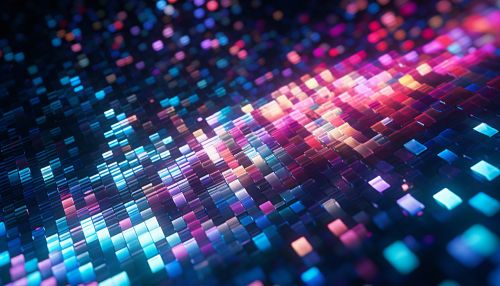Pixel
Definition and Overview
A pixel (short for picture element) is the smallest unit of a digital image or display device that can display a color or shade. It is a fundamental concept in digital imaging, computer graphics, and image processing. Pixels are used in both still and moving images displayed on digital devices, from computer monitors to smartphones screens, digital cameras, and televisions.


History
The concept of the pixel dates back to the earliest days of computers and video games. The term "pixel" was first published in 1965 by Frederic C. Billingsley of JPL, to describe the picture elements of video images from space probes to the Moon and Mars. However, the concept of a pixel predates this coinage, with Texas Instruments' Richard K. Moore using "picture element" in his 1963 patent application.
Structure and Properties
A pixel is essentially a point in a picture and has properties like color, intensity, and location. The color of a pixel is usually represented in the RGB (color model), where three primary colors (red, green, and blue) are combined in different ways to reproduce other colors. The intensity of a pixel is determined by the amplitude of the combined red, green, and blue color signals. The location of a pixel is its position in the image, usually defined by x and y coordinates.
Pixel Resolution
The pixel resolution of an image or a display device refers to the number of pixels in each dimension that can be displayed. It is often described as a set of two numbers, where the first number is the number of pixel columns (width) and the second is the number of pixel rows (height). For example, a resolution of 1920 x 1080 means the width is 1920 pixels and the height is 1080 pixels. The total number of pixels in an image can be calculated by multiplying the width and height.
Pixel Density
Pixel density is a measure of how closely pixels are packed together in a display device, usually expressed in pixels per inch (PPI). Higher pixel densities can result in sharper and more detailed images. However, the human eye has a certain limit to its ability to resolve detail, and beyond a certain pixel density, additional detail is not perceivable.
Pixels in Digital Photography
In digital photography, a pixel is a physical point in a raster image, or the smallest, addressable element in an all points addressable display device. The more pixels an image contains, the higher its resolution. However, the quality of a digital photo is not just determined by the number of pixels it contains. Other factors, such as the quality of the lens, the size of the image sensor, and the image processing algorithms used, also play a significant role.
Pixels in Computer Graphics
In computer graphics, pixels are used to create images that are displayed on screens. Each pixel in an image represents a small part of the overall picture. By changing the color and intensity of each pixel, different images can be created. This process is known as rasterization.
Pixels in Image and Video Compression
Pixels also play a crucial role in image and video compression techniques. These techniques often involve reducing the amount of data needed to represent an image or a video, without significantly reducing the quality. This is often achieved by exploiting similarities between neighboring pixels and using mathematical techniques to represent these similarities more compactly.
